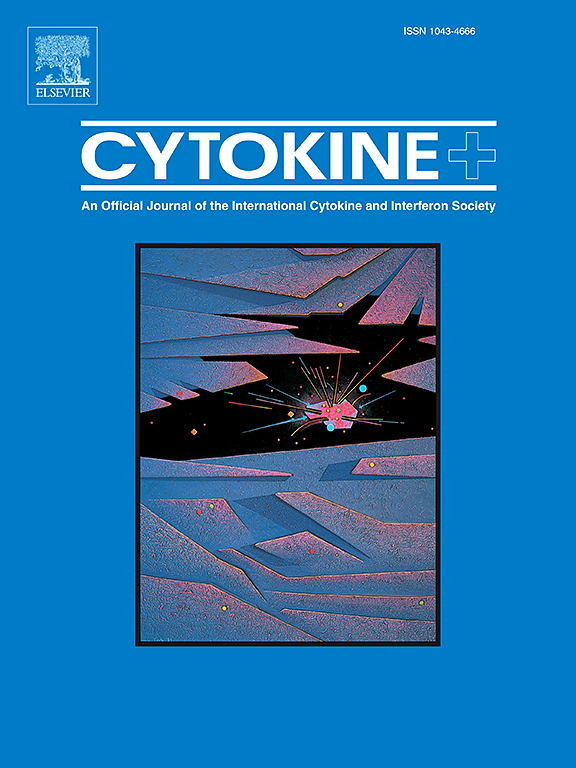神经母细胞瘤的遗传洞察:免疫细胞特征的作用
IF 3.7
3区 医学
Q2 BIOCHEMISTRY & MOLECULAR BIOLOGY
引用次数: 0
摘要
目的通过双样本孟德尔随机化(MR)分析,阐明免疫细胞与神经母细胞瘤之间的因果关系。材料和方法本研究中使用的全基因组关联研究(GWAS)的暴露和结果数据来自一个开放获取数据库。该研究利用双样本磁共振分析来评估731种免疫细胞特征与神经母细胞瘤之间的因果关系。研究这种关系的主要方法是应用方差逆加权法。此外,采用留一分析、科克伦Q检验、孟德尔随机化艾格法(MR-Egger)截距检验和孟德尔随机化多效残差和离群值检验(MR- presso)等敏感性分析验证MR结果的可靠性。ResultsThe研究确定5免疫细胞特征会导致神经母细胞瘤的风险,包括CD3−淋巴细胞白细胞(%)(IVW: 0.65(95%置信区间)[0.42 - -0.99],P = 0.0469), CD86在粒细胞(IVW: 0.61(95%置信区间)[0.41 - -0.92],P = 0.0167), FSC-A在粒细胞(IVW: 0.73(95%可信区间)[0.57 - -0.93],P = 0.0117), HLA DR + CD8 + T细胞绝对计数(IVW:或(95%置信区间):1.38 (1.01 - -1.88),P = 0.0408), IgD−CD38 + B细胞绝对计数(IVW: 0.42(95%置信区间)[0.27 - -0.66],P = 0.0002)。敏感性分析结果与主要研究结果一致。结论通过遗传方法证实了特定类型的免疫细胞与神经母细胞瘤之间存在密切的因果关系,为今后的临床研究提供了有价值的指导。本文章由计算机程序翻译,如有差异,请以英文原文为准。
Genetic insights into neuroblastoma: the role of immune cell features
Objective
To elucidate the causal relationship between immune cells and neuroblastoma, we conducted a two-sample Mendelian randomization (MR) analysis.
Materials and methods
The exposure and outcome data for the genome-wide association study (GWAS) used in this research were sourced from an open-access database. The study utilized two-sample MR analysis to evaluate the causal relationship between 731 immune cell features and neuroblastoma. The main approach to explore this relationship is to apply the inverse variance weighting (IVW) method. In addition, sensitivity analyses including leave-one-out analysis, Cochran's Q test, Mendelian randomization Egger method (MR-Egger) intercept test and Mendelian randomization pleiotropy residual sum and outlier test (MR-PRESSO) were performed to verify the reliability of the MR results.
Results
The study identifies five immune cell traits as causally contributing to neuroblastoma risk, including CD3− lymphocyte (% of leukocytes) (IVW: OR[95 % CI] 0.65[0.42–0.99], P = 0.0469), CD86 on granulocyte (IVW: OR[95 % CI] 0.61[0.41–0.92], P = 0.0167), FSC-A on granulocyte(IVW: OR[95 % CI] 0.73[0.57–0.93], P = 0.0117), HLA DR+ CD8+ T cell Absolute Count(IVW: OR[95 % CI]: 1.38[1.01–1.88], P = 0.0408), IgD− CD38+ B cell Absolute Count(IVW: OR[95 % CI] 0.42[0.27–0.66], P = 0.0002). The results of sensitivity analyses were consistent with the main findings.
Conclusion
We demonstrated a close causal relationship between specific types of immune cells and neuroblastoma by genetic methods, offering valuable guidance for future clinical studies.
求助全文
通过发布文献求助,成功后即可免费获取论文全文。
去求助
来源期刊

Cytokine
医学-免疫学
CiteScore
7.60
自引率
2.60%
发文量
262
审稿时长
48 days
期刊介绍:
The journal Cytokine has an open access mirror journal Cytokine: X, sharing the same aims and scope, editorial team, submission system and rigorous peer review.
* Devoted exclusively to the study of the molecular biology, genetics, biochemistry, immunology, genome-wide association studies, pathobiology, diagnostic and clinical applications of all known interleukins, hematopoietic factors, growth factors, cytotoxins, interferons, new cytokines, and chemokines, Cytokine provides comprehensive coverage of cytokines and their mechanisms of actions, 12 times a year by publishing original high quality refereed scientific papers from prominent investigators in both the academic and industrial sectors.
We will publish 3 major types of manuscripts:
1) Original manuscripts describing research results.
2) Basic and clinical reviews describing cytokine actions and regulation.
3) Short commentaries/perspectives on recently published aspects of cytokines, pathogenesis and clinical results.
 求助内容:
求助内容: 应助结果提醒方式:
应助结果提醒方式:


